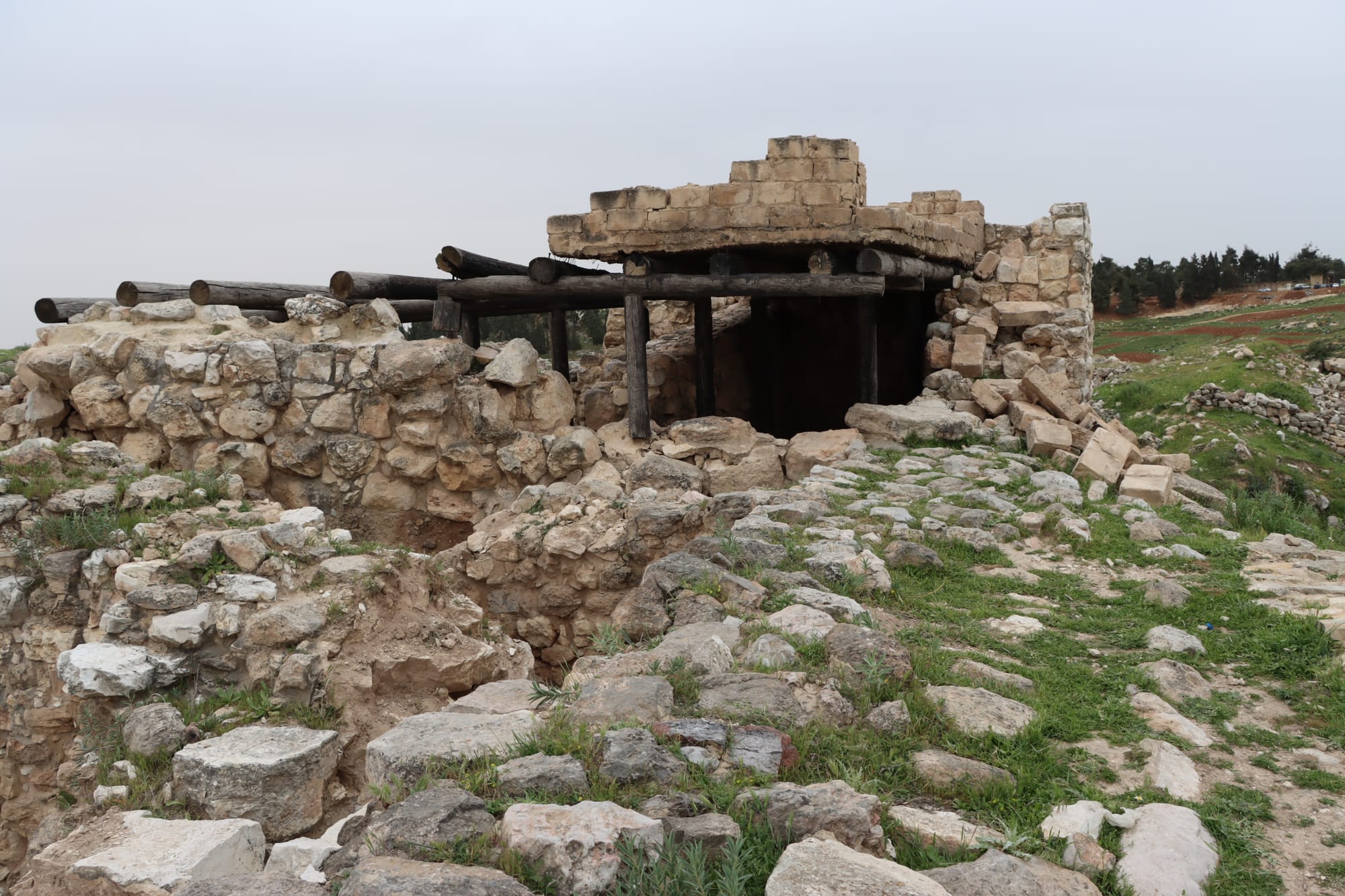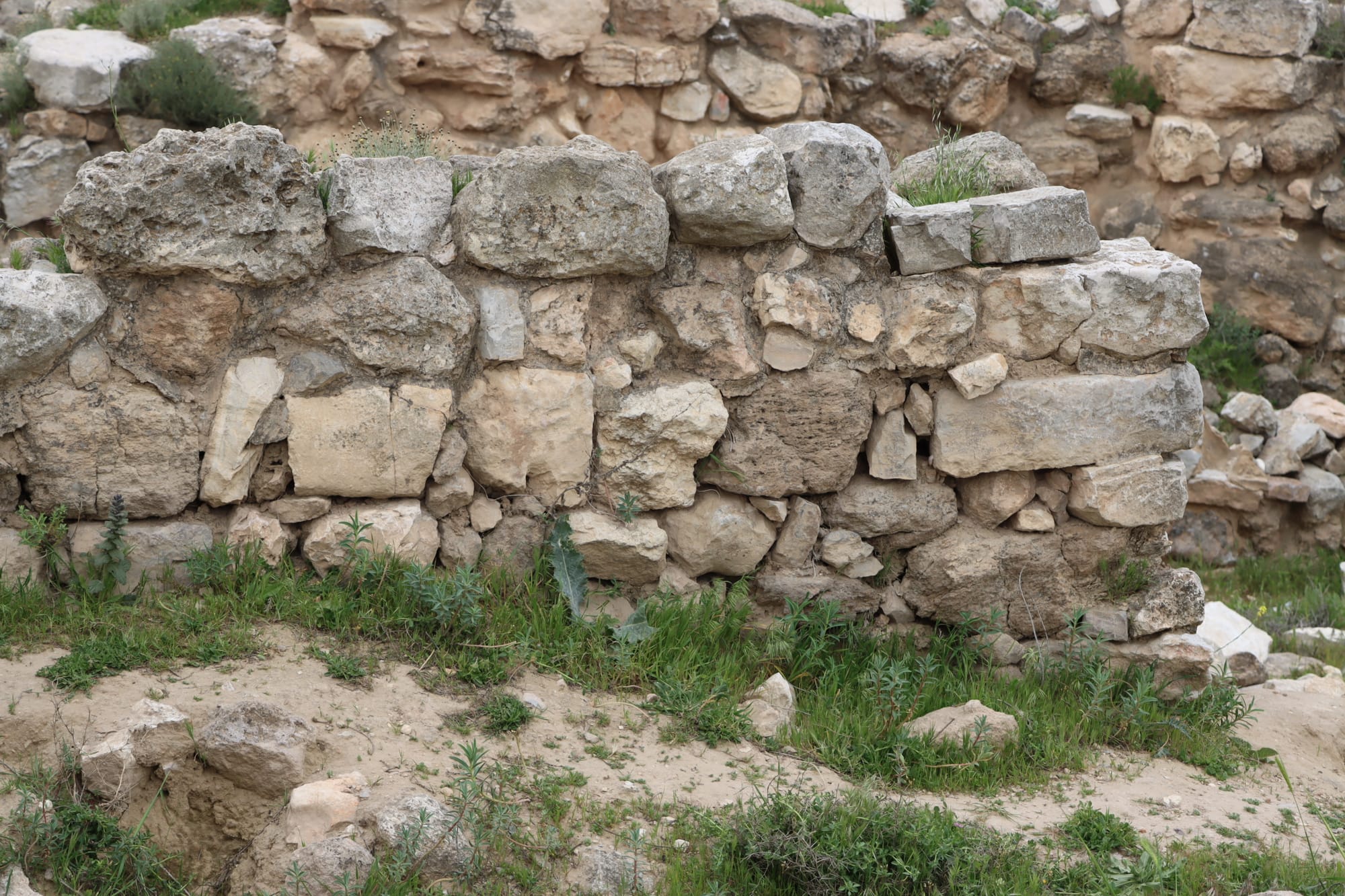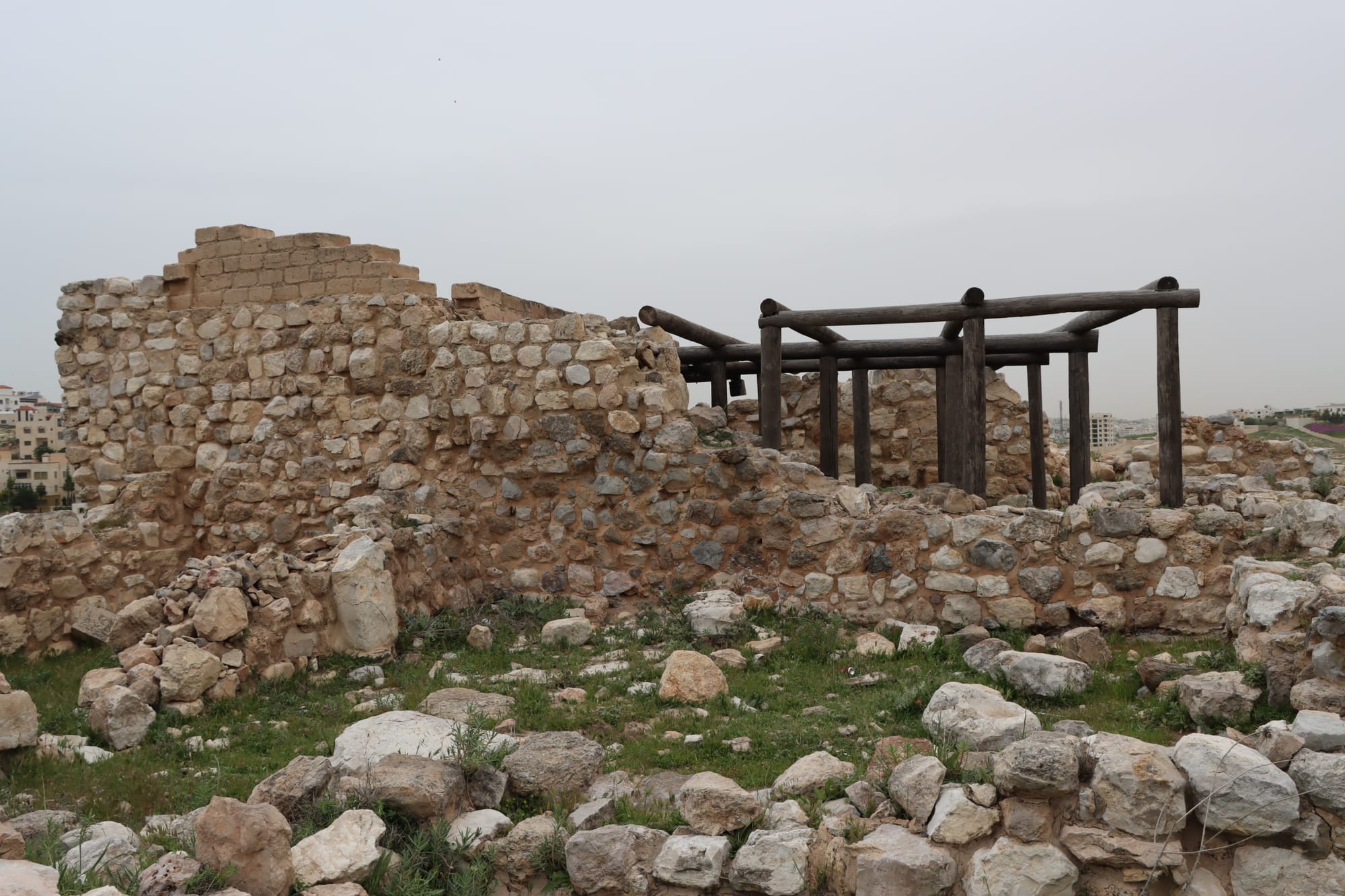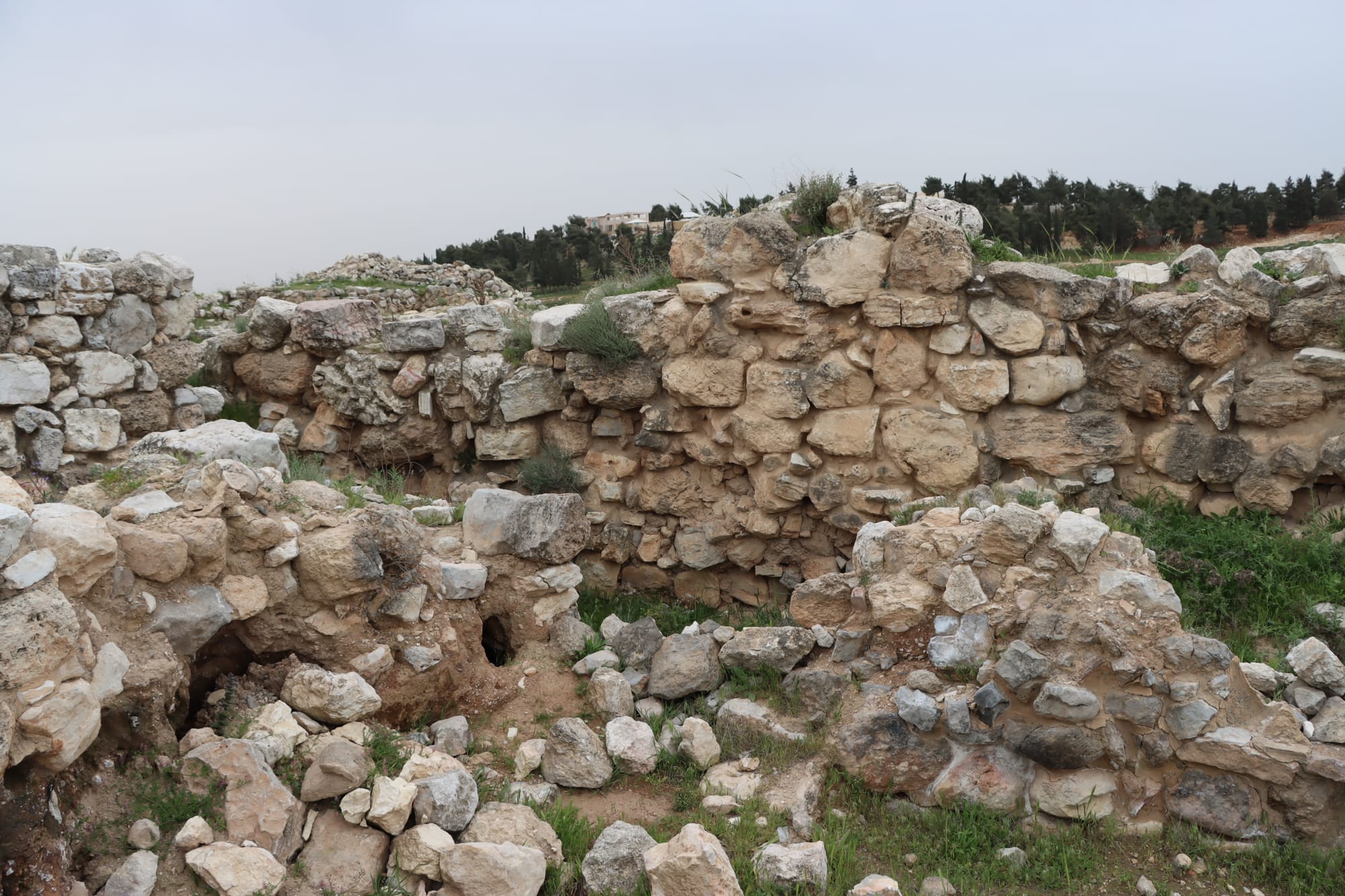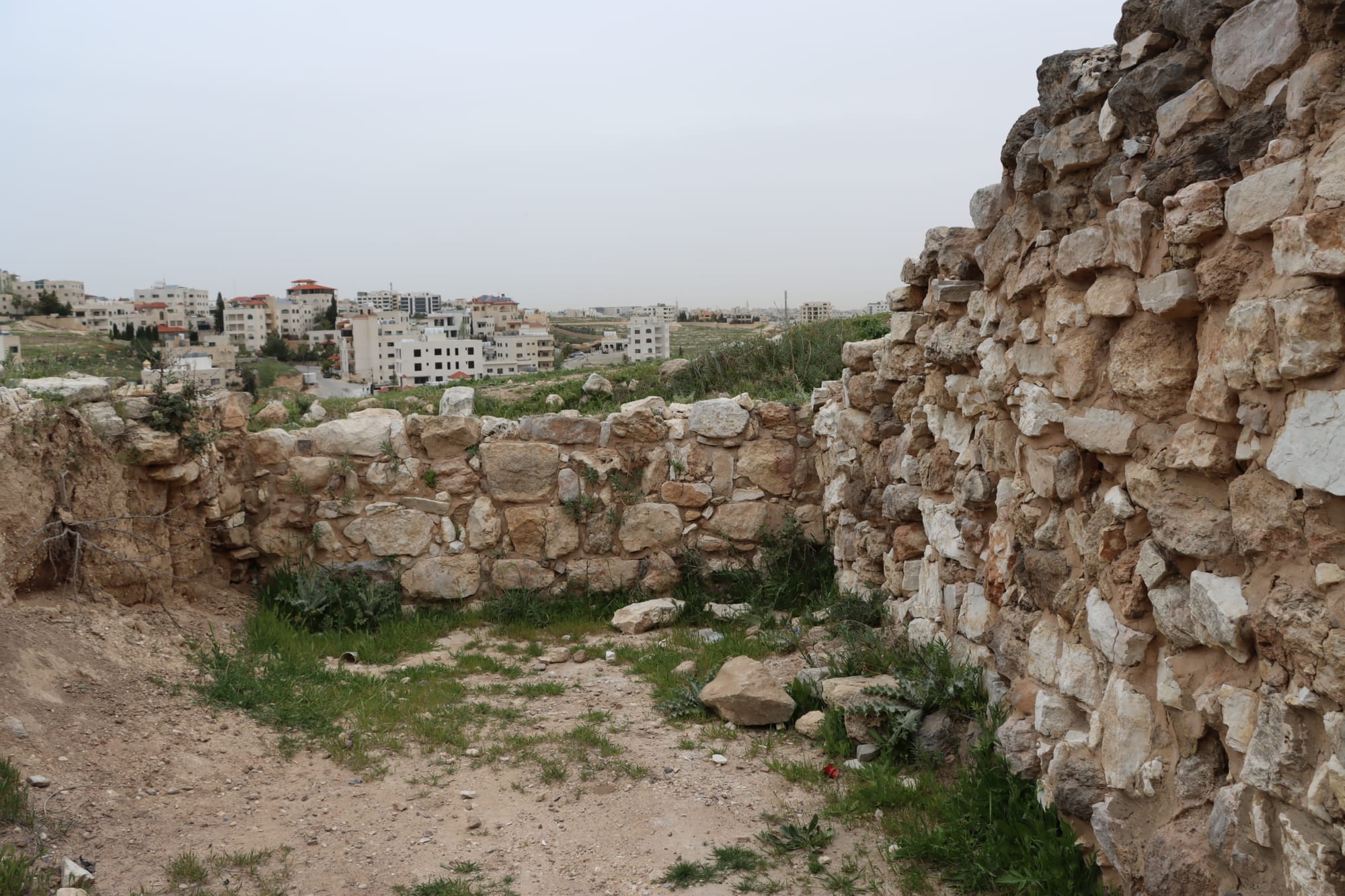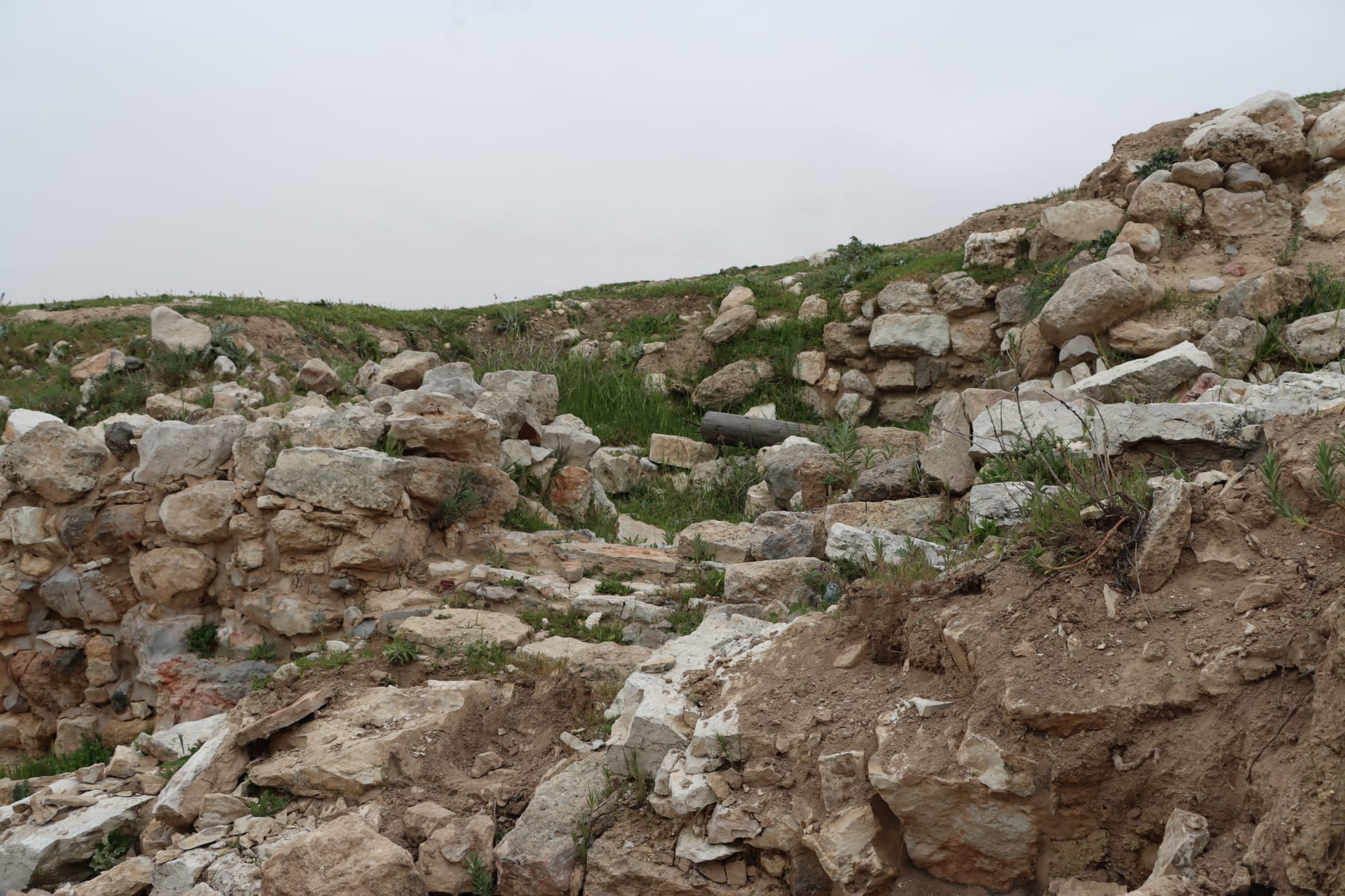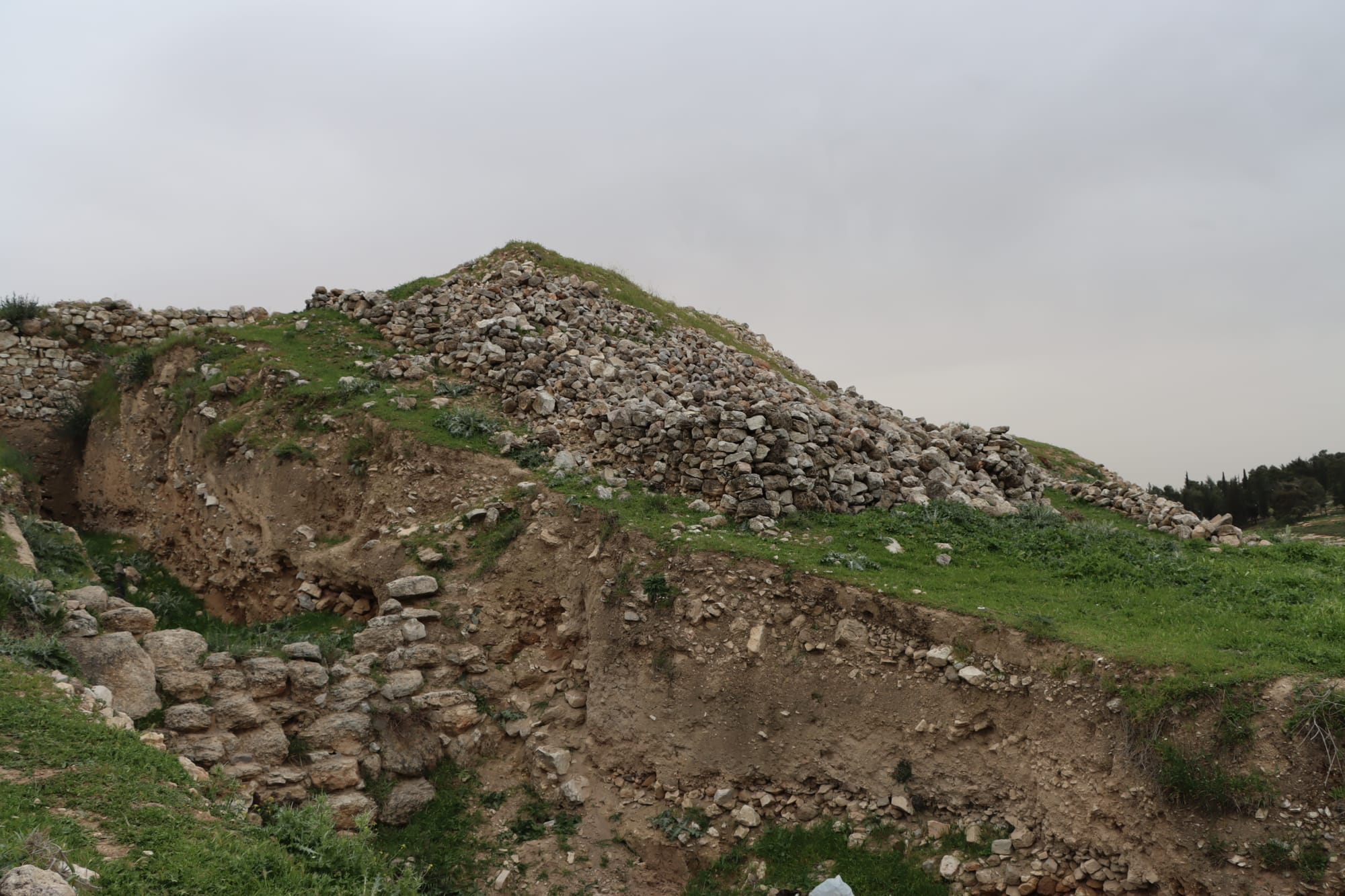Tall Al-Oumeiri
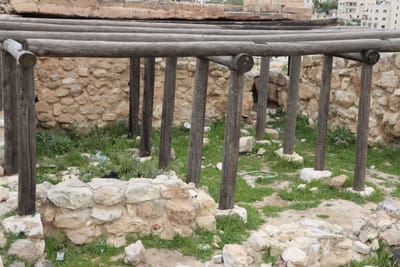
The archaeological remains during the Iron Age were represented by fortification walls and remains of residential houses, a gate and an Ammonite citadel. The most important material cultural is the finding of an Ammonite seal print in the name of Baal Yesha. The site continued to be settled during the Persian period where a buildings and urns sealed in the name of ( Shoba Ammon ), which is the Persian province of Ammon, were found.
The occupation at the site continued during the Roman era and extended to the Byzantine period, which we note through its archaeological remains represented by a church on the basilica system with a mosaic floor decorated with geometric, animal and plant shapes.
One of the most important discoveries is a Greek inscription consisting of seven lines, 3.5 meters long and 70 centimeters wide, which commemorates the establishment of the church.
Click For Directions

